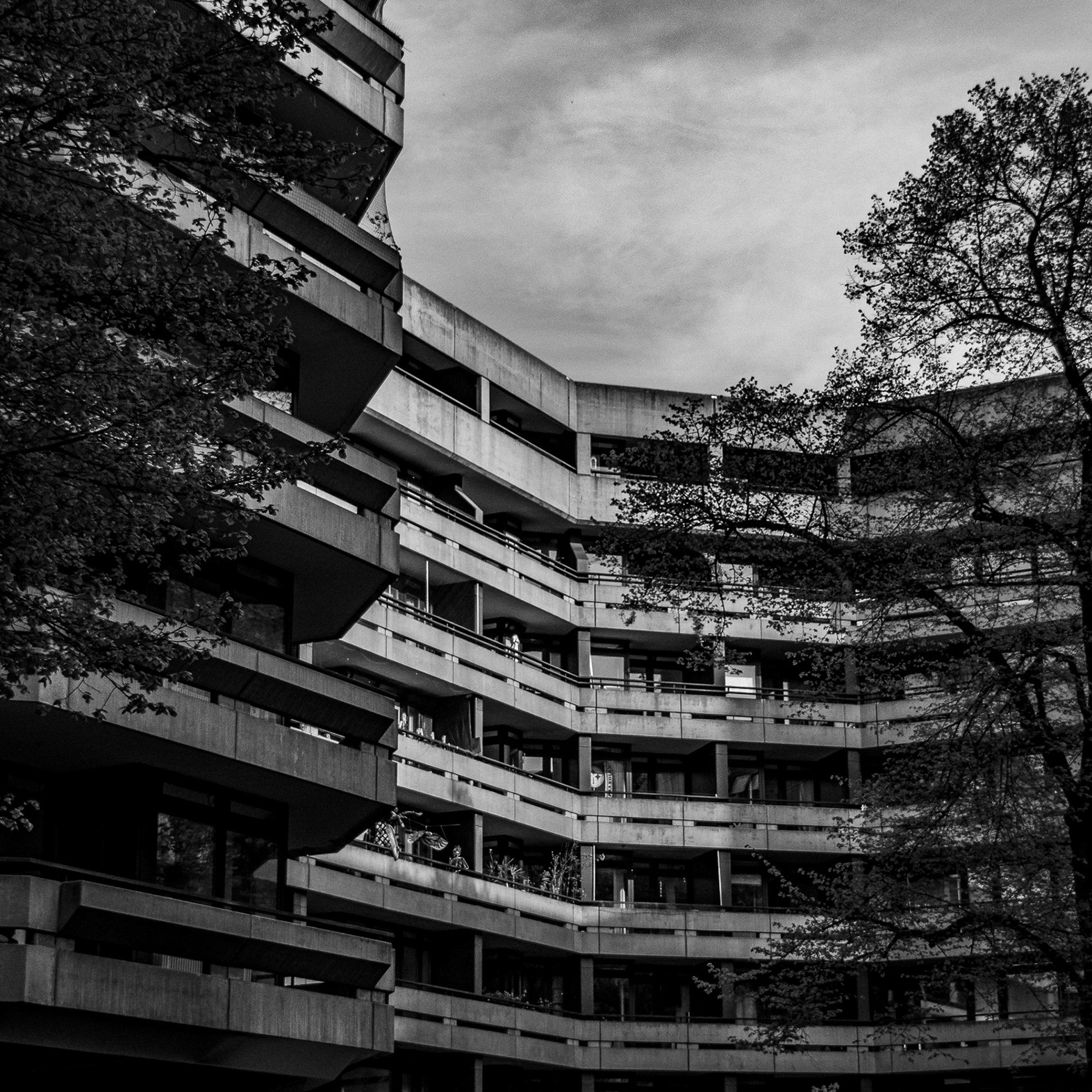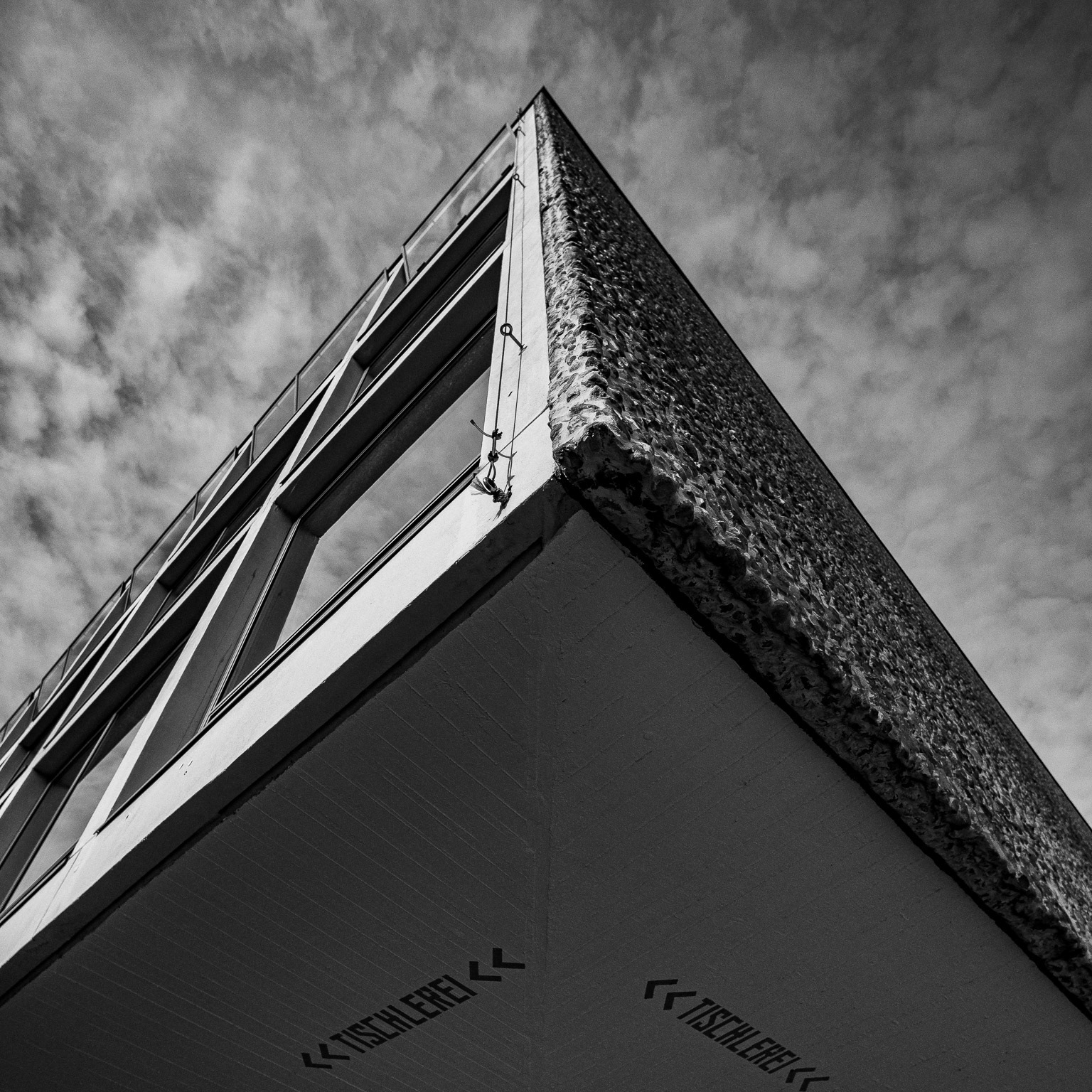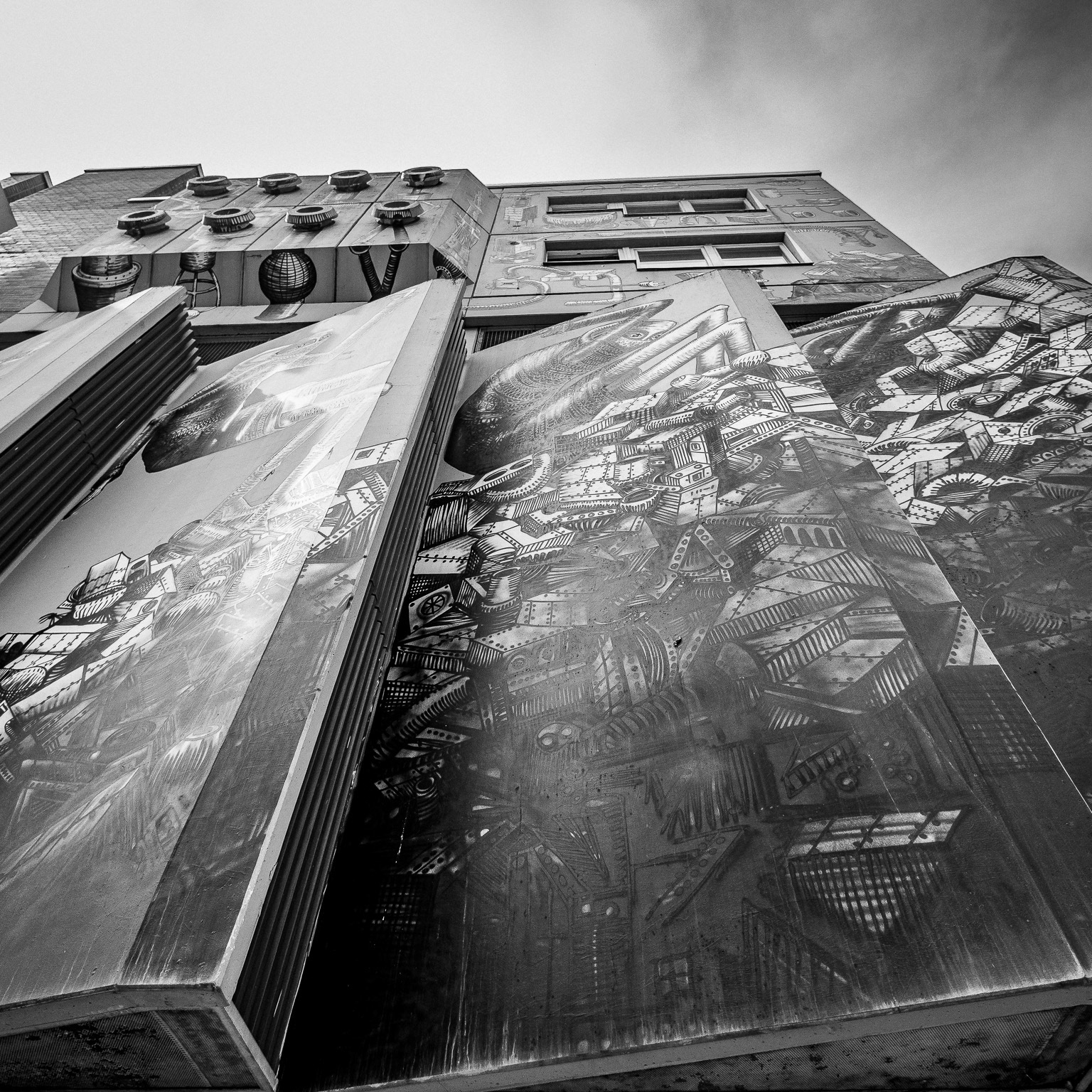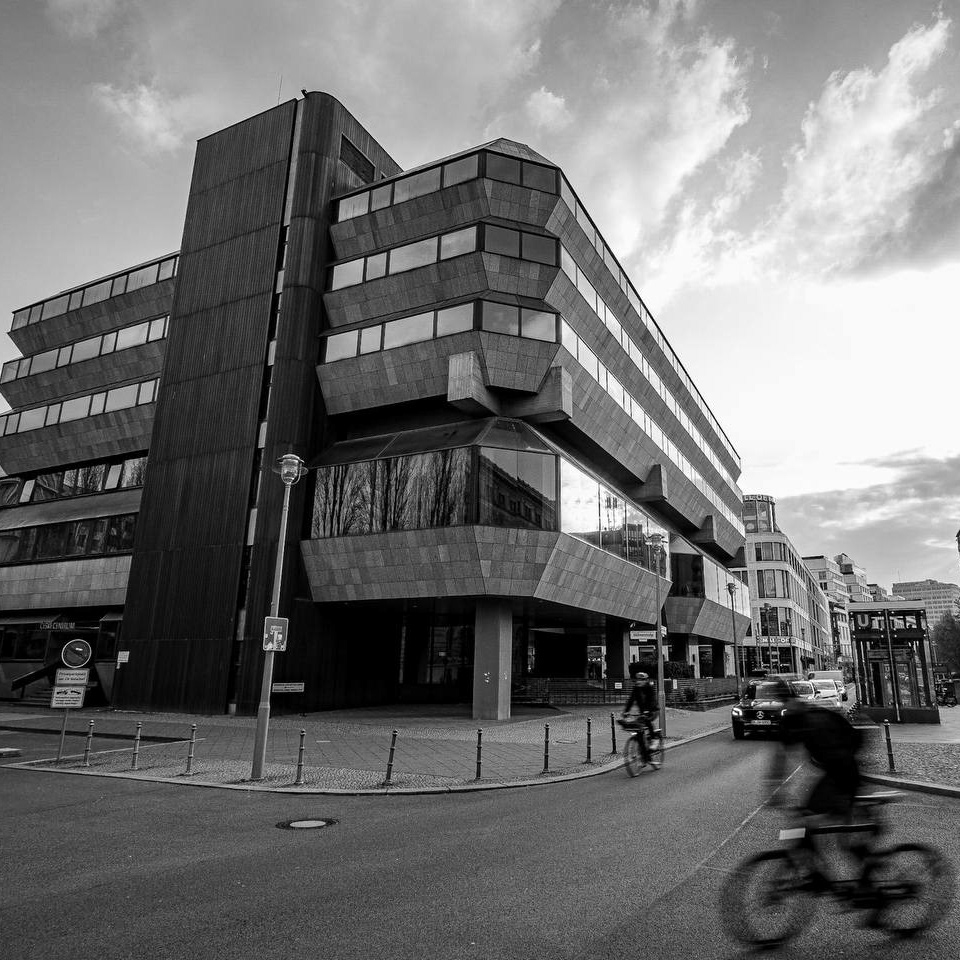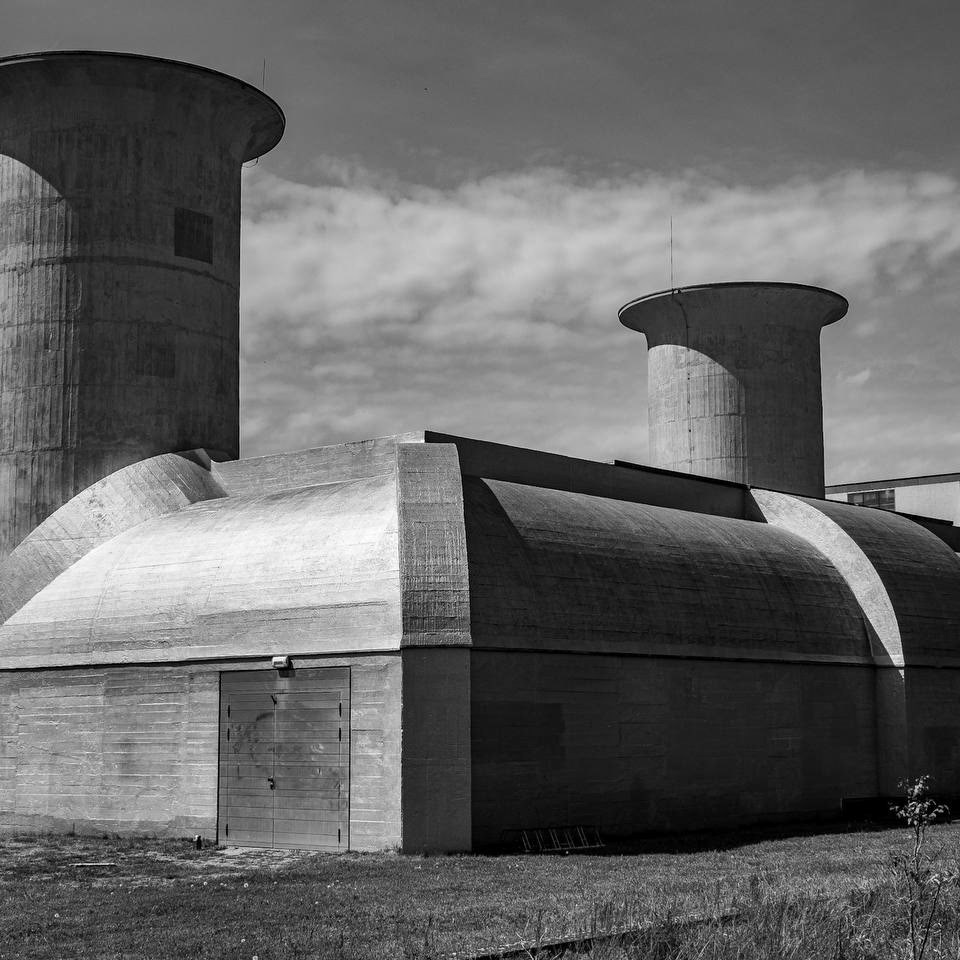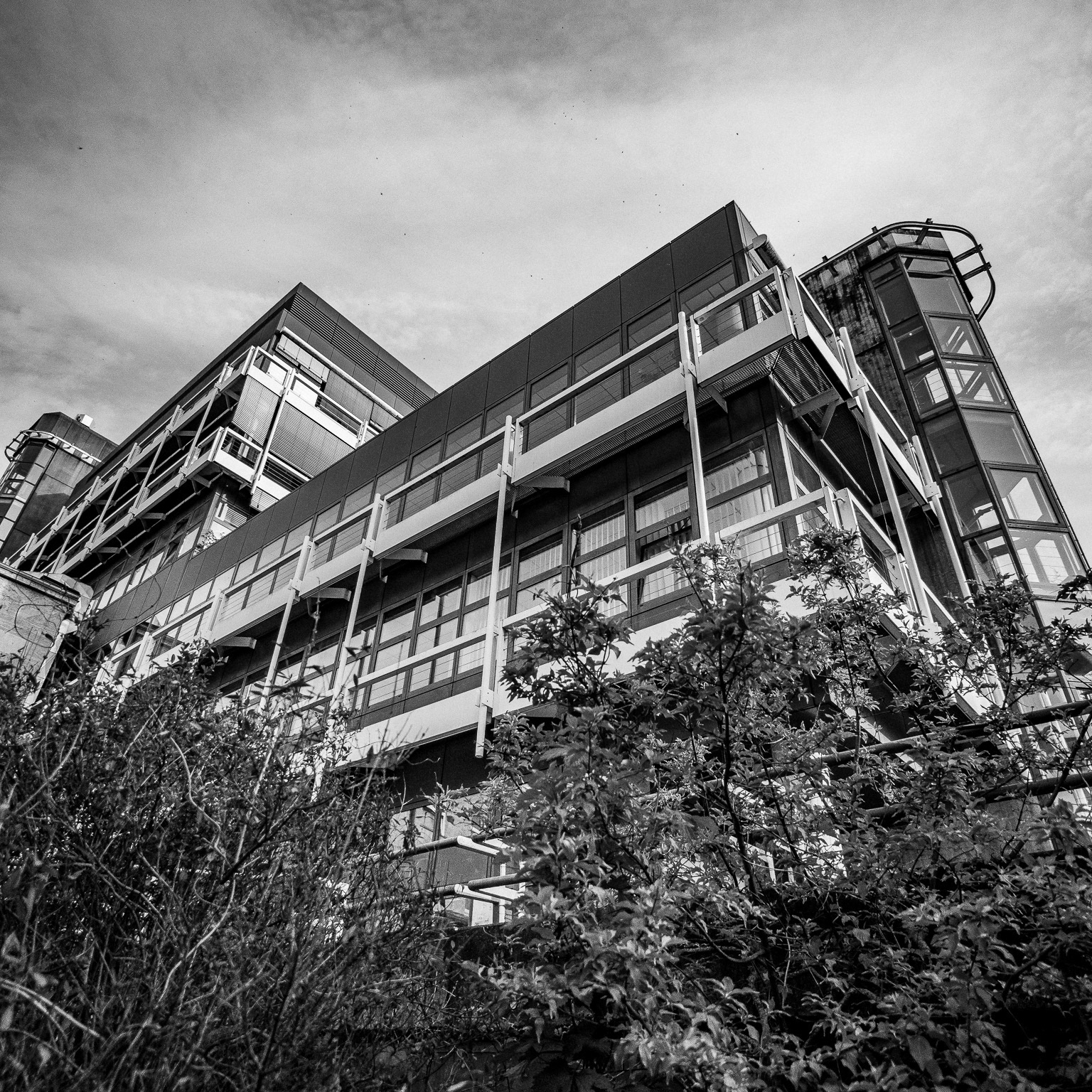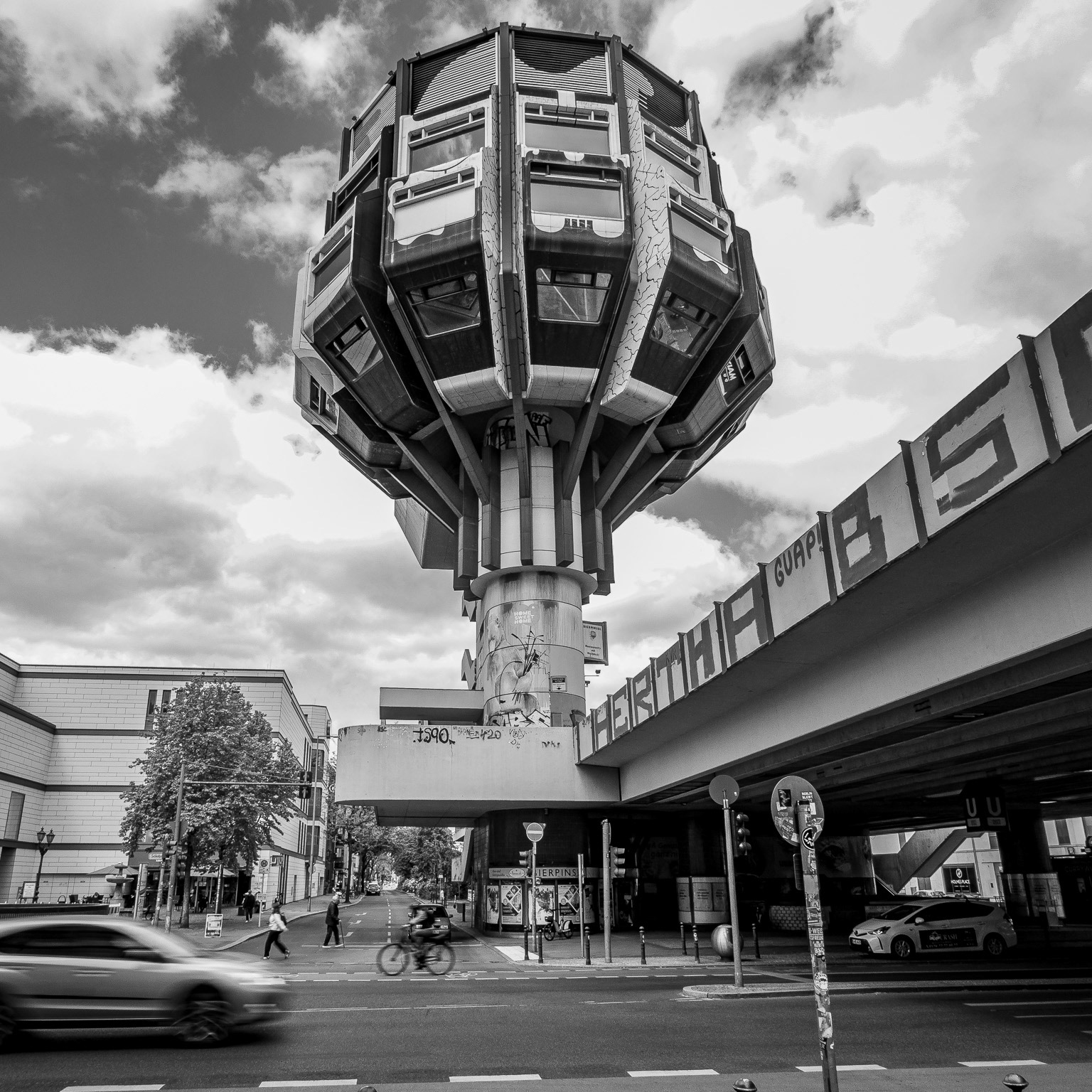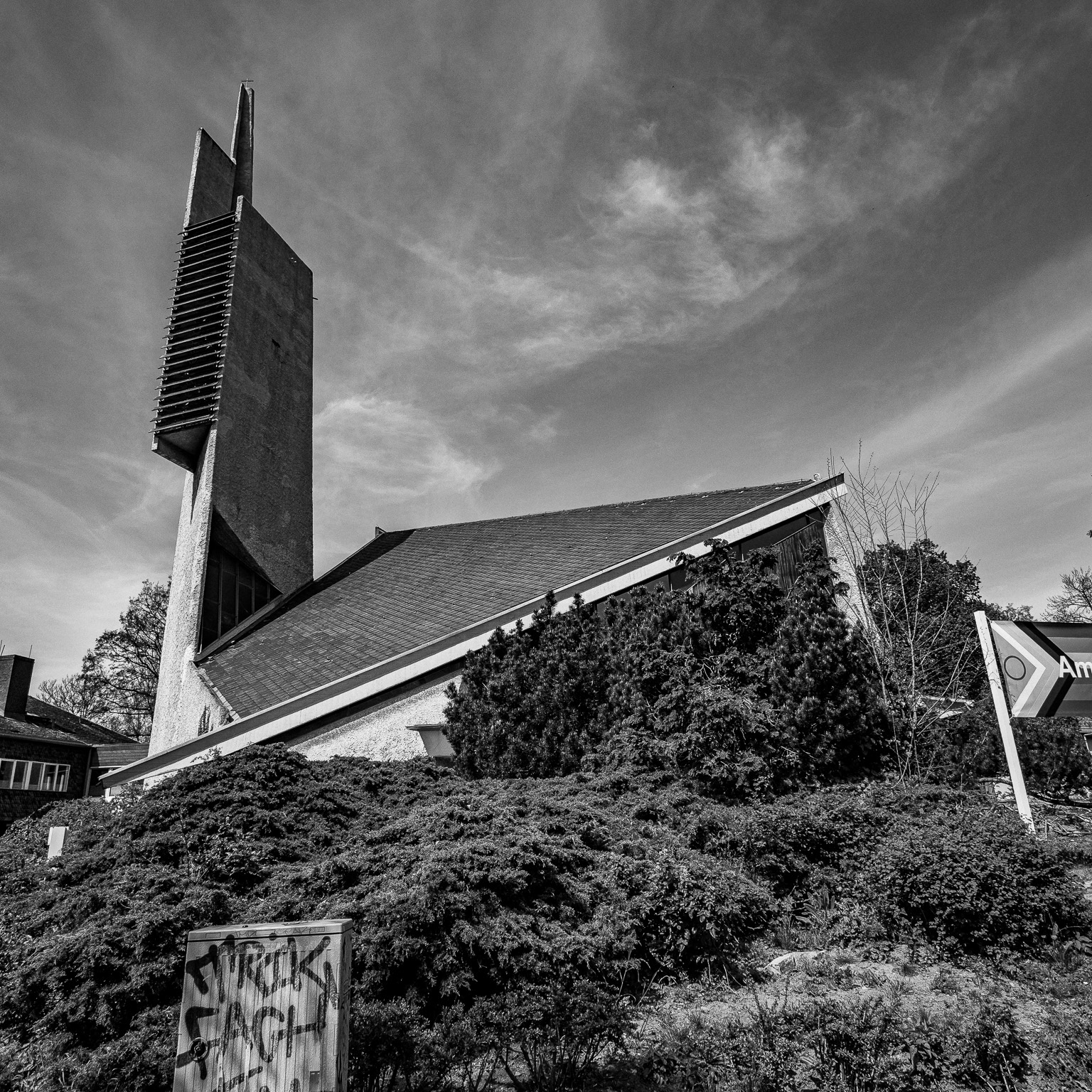1981 | Gerd Hänska and Magdalena Hänska
Krahmerstraße 6, 12207 Berlin
The research facility, designed by Gerd Hänska and Magdalena Hänska, began its unclearly documented planning phase around 1965-1967, with a definitive design ready by 1967. Construction started in 1971 but faced interruptions from 1975 to 1978 due to significant cost overruns, finally completing in 1981. Initially, a prototype was built on Bäkestraße to test construction methods and materials.
The building has consistently stirred public controversy, particularly due to its use for animal testing, high costs, and its fortified concrete pyramid design. As Brutalism has gained historical and architectural appreciation, this facility's significance has grown, recognized as a notable example of the style in Germany.
In 2017, plans by Charité to demolish the facility led to official reviews of its historical significance. By November 2019, preservation bodies advocated for its conservation, recognizing its architectural value. Public debates and opposition from prominent architects and historians, alongside initiatives like "Mäusebunker," challenged the demolition plans. Proposals for repurposing included transforming it into a bouldering gym or server farm.
In 2020, a potential sale to transform it into a cultural center was proposed, mirroring successful projects like Berlin's St.-Agnes-Church. The demolition was paused until fall 2021 for further consideration of its heritage status. Finally, in May 2023, it was announced that the building would be preserved and repurposed, securing its status as a protected landmark.
Sources: https://de.wikipedia.org/wiki/Forschungseinrichtung_f%C3%BCr_experimentelle_Medizin
Photos: Eric Bauermeister
